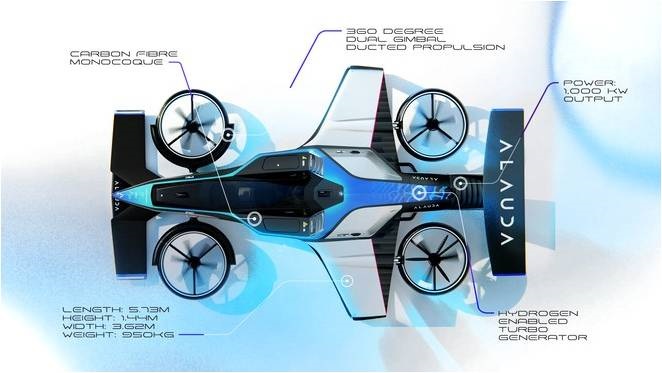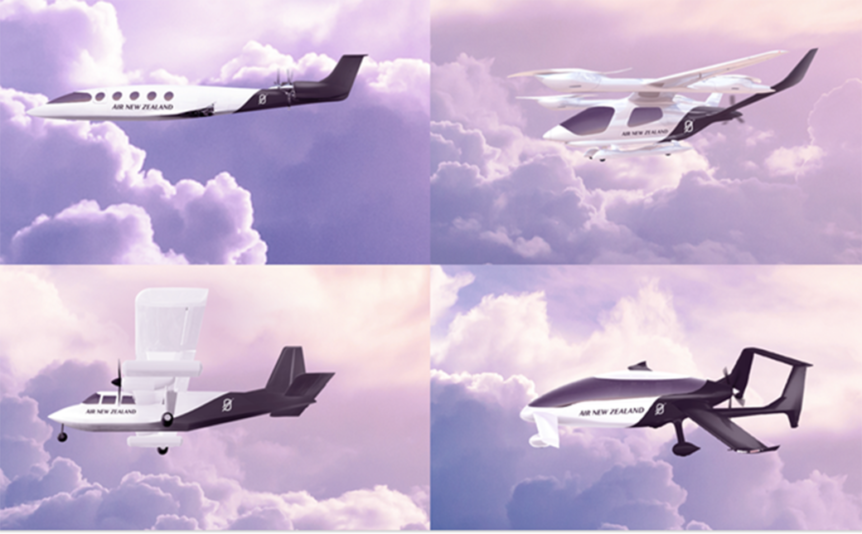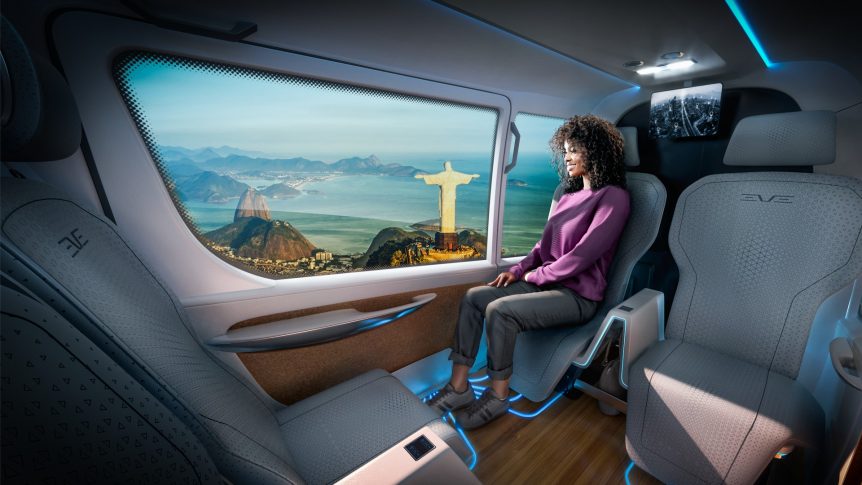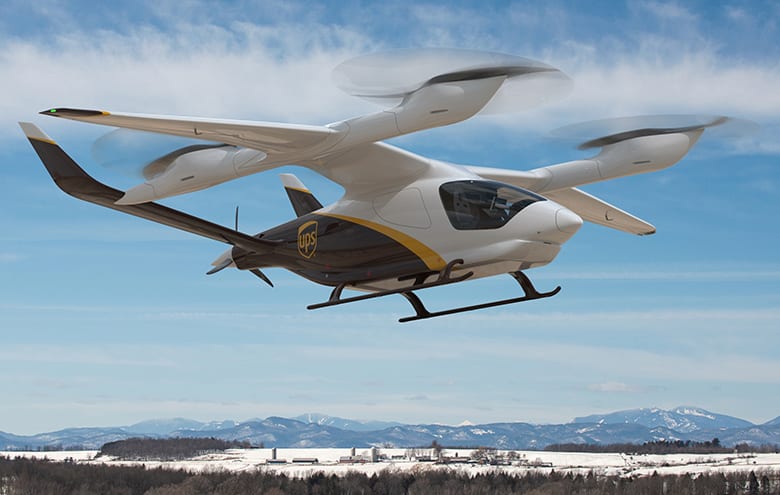Alauda and AMSL – two companies down under – are pressing ahead on divergent missions, but both powering “flying cars” with hydrogen. Both craft will achieve higher speeds and cover longer ranges than most other electric Vertical Take Off and Landing (eVTOL) craft. Alauda Airspeeder MK4 Alauda’s brief history of creating Airspeeders hits its latest iteration, the MK4. It replaces batteries with a 1,000 kilowatt hydrogen-fueled turbo generator driving ducted fans in place of previous open rotors. Up to now, the various Marks were remotely controlled and battery powered. MK4s will be “crewed” and powered by green hydrogen. Evolved over the last few years, MK4 will be much faster than its 100 kilometer per hour predecessors, and we hope, more controllable. Remotely controlled crashes, as shown in this2022 MK3 race, are no more harmful to human operators than a video game – although probably more costly. Looking a great deal like a Formula 1 or Formula e race car, the …
Air New Zealand Plans for Zero Emissions
Air New Zealand has a five-part plan for reducing and even eliminating aviation emissions with some well-defined approaches and goals. The airline hopes to achieve net zero by 2050, with demonstrable steps toward that starting now. Five Key Elements ANZ will rely on five key elements in its quest for zero-emission flight. They are already involved in producing sustainable aviation fuel (SAF), partnering with makers of zero emission aircraft technologies, renewing their fleet, reducing carbon emissions through improved flight and ground operations, and removing carbon using best known techniques. You can read the full sustainability report here. Producing SAF Sustainable aviation fuel (SAF), explains Air New Zealand, “Is made from a variety of sustainable resources other than crude oil, such as used cooking oils, landfill waste, forestry waste, carbon captured from the air and green hydrogen. It has the potential to dramatically reduce lifecycle carbon emissions by up to 80 percent or more compared with traditional jet fuel.” Since New …
Following the Sky Taxi Money: eVTOLs
As though by magic, money from Wall Street, venture capitalists and other investors show a growing interest and cash flow in sky taxis. It started on August 11 with JoeBen Bevirt of JOBY ringing the bell that starts trading on the stock market floor. As one web site points out, it’s up to the discretion of the New York Stock Exchange (NYSE) as to who gets to ring the bell and, “Only those companies with stocks or exchange-traded funds (ETFs) listed on the exchange can ring the bell.” We’ll look at a sampling of companies making electric Vertical Take Off and Landing (eVTOL) vehicles and selling in domestic and foreign markets for an overview of what’s hot. Later, we’ll look at the inroads being made by makers of fixed-wing aerial vehicles in the nascent regional market. Archer “The closing of the business combination (with Atlas Crest Investment Corp.) generated $857.6 million of gross proceeds, which will help fund Archer’s vision …
BETA and Blade Cut Deal for 20 Alia’s
Business as Unusual BETA Technologies made a big move from its highly complex Ava to a simpler Alia, and managed to snag an initial order for up to 150 of its new craft from United Parcel Service (UPS). This was followed by the signing of a binding agreement with Blade for another 20 craft for passenger service. Vermont Business Magazine reports that BETA Technologies started with its first customer and partner, United Therapeutics, which will rely on BETA’s aircraft to deliver organs for human transplantation. High speed and reliability are obvious premiums in this endeavor. Recently, United Parcel Service (UPS) announced it reserved the right to purchase 150 of BETA’s aircraft, with the first 10 to be delivered beginning in 2024. UPS also purchased BETA’s charging stations as part of an integrated solution. Gaining government backing, the United States Air Force Agility Prime program continues testing BETA’s machines. The program, “Marshals government resources to accelerate commercialization of air mobility vehicles.” …
Beta Alia: Electric with Tern-like Grace
A new aircraft’s first takeoff is usually performed under its own power, but the recent trip by Beta Technologies’ just-revealed Alia eVTOL (electric Vertical Take Off and Landing) aircraft was externally powered. A 30-minute lift across Lake Champlain from Alia’s birthplace in Burlington, Vermont to its test site in Plattsburgh, New York was uneventful, but spectacular nonetheless. Helicarrier Assists on First Flight Hauled 100 feet below a Sikorsky S-61N from Quebec-based Helicarrier, the all-white, four-rotor Alia “crossed over the northern end of Burlington. With streets along its route blocked off by police, [it] then flew at a stately pace across the lake, usually just a few hundred feet above the surface of the water,” according to Vertical.com. Helicarrier, besides sharing a named with a Marvel Comics flying aircraft carrier and command center (fictional), performs real-life heavy lifts on anything up to 10,000 pounds. In the case of the Alia transport, the lift was extra heavy based on the value of …





